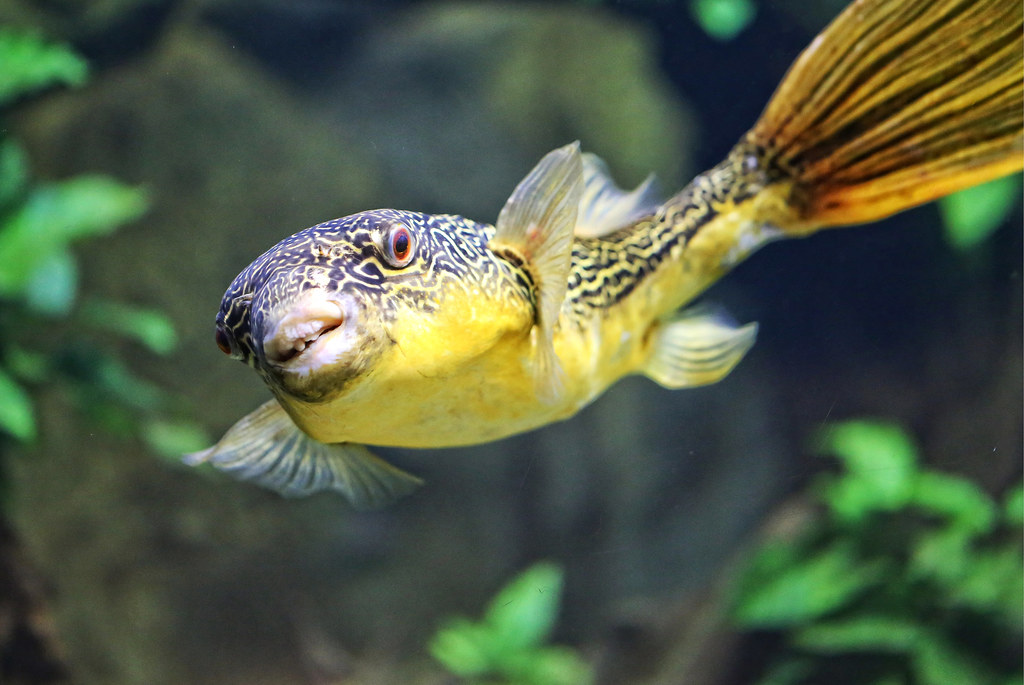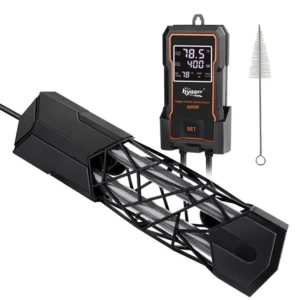A balanced food shall be fed to the fish, regardless of the type of ornamental fish.
Content Table
What Does Giant Puffer Eat?
Giant puffer is one of the more popular types of pufferfish. What do pufferfish eat? Let’s take a look now.
The giant puffer is a cute species that has always been loved by many. They like crabs, bivalves, shrimps, clams, bloodworms, loach, small river prawns, Little goldfish, etc. are all favorite foods. Choose the one your giant puffer likes to eat.
If you feed crabs to giant puffers for a long time, you will find that the pufferfish will not be as active and won’t eat much. You need to pay attention in this case. It is not very good to eat too much crab. The amount of crab needs to be controlled.
In addition, small river prawns also need to be paid attention to when feeding them to pufferfish. The small river prawns can be said to be the favorite food of all the food, giant puffer can eat. There are also many methods for making small river prawns for the giant puffers. Many people choose to freeze small river prawns in the refrigerator and take out part of them when it’s time to feed the giant puffer. However, some people believe that the small river prawns should be boiled before being thrown directly into the water for the giant puffer. 
How to keep puffer fish?
- Provide a more suitable environment for keeping pufferfish, and provide different water temperatures according to different fish types.
Tropical fish are extremely sensitive to Keep Puffer Fish? to temperature, and if the temperature is not suitable, they will die soon. Different types of puffer fish have different requirements for water temperature. The water temperature of most tropical fish is 20℃-24℃, and the water temperature for breeding is 25℃-28℃. The temperature difference between day and night should not exceed 4℃.
- Right PH level, a working cycling system, and a biosystem.
The artificial breeding of tropical fish requires soft water or low-hardness water, and the PH is weakly acidic or neutral.
A certain amount of aquatic plants should be planted in the aquarium because aquatic plants produce oxygen through photosynthesis, which increases the oxygen in the water. At the same time, timely removal of dirt and frequent water changes can also increase the dissolved oxygen in the water.
- Clean the fish tank regularly, because, after a long time, there will always be some dirt hidden in the corners of the fish tank.
The fish tank should not always be in the sun, because under long time exposure, a lot of algae will grow in the fish tank, which will make the water in the tank worse.
- Put more small fish for the ornamental fish to eat.
Giving too much fish food feed will make the water quality of the fish tank worse, so it is better to feed the small fish instead.
- Light
Place the fish tank in a sunny room. If the fish tank is placed in a room without sunlight, the light should be used to illuminate the water plants. The LED light can make tropical fish grow faster and make the fish more colorful.
- Stocking
Tropical fish are raised in tanks, and the stocking density depends on the size of the tank. For those who are raising fish for the first time, the smaller the density, the better, and an air pump is also required. For the collocation of fish in the same tank, quiet fish cannot be polycultured with aggressive fish; large fish cannot be polycultured with small fish.
There are many options for tropical fish food, such as fish insects, bloodworms, or packaged food suitable for different types of tropical fish. Both raw bait and live bait should be washed to control the source of the disease.


I don’t think the title of your article matches the content lol. Just kidding, mainly because I had some doubts after reading the article.
Hi conta binance,
Any doubts please share them with us.
hygger is making progress with you.
Thanks
hygger team